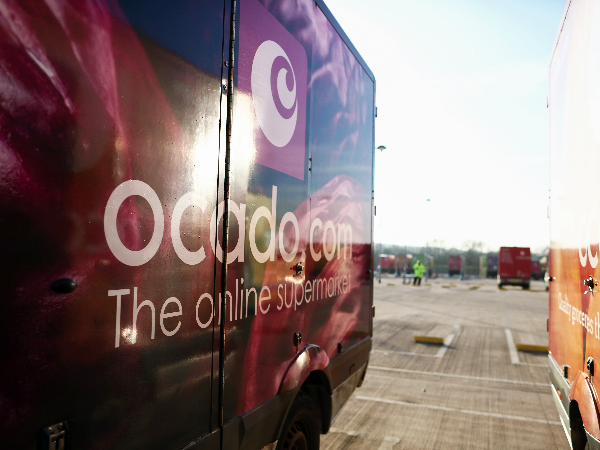Marks and Spencer shares rose 20% yesterday. Is this just the start?
The Marks and Spencer share price is up 92% since this time last year, as CEO Steve Rowe's turnaround plan begins to bear fruit for the FTSE 100 retailer. Can it return to its five-year high of 386p?

Source: Bloomberg
At 232p right now, the Marks and Spencer (LON: MKS) share price has soared 20% since market close on Tuesday, due to stellar H1 2021 results. And in fact, its share price is up 34% in the past month, 49% in the past six months, and 92% in the past year.
Of course, some perspective is important. To reach its five-year high of 386p it hit on 26 May 2017, it would have to rise another 66%. And it was 214p on 3 January 2020, before the pandemic saw it crash 58% to 90p by 24 April 2020.
While the past year has been stellar for recent investors, long-term shareholders are simply seeing the share price recover to its pre-pandemic point. And CEO Steve Rowe has highlighted plenty of speedbumps in the way of further gains.
Where do you think the Marks and Spencer share price will go next?
Take your position on UK shares for just a small initial deposit with spread bets or CFDs. Spread bets are completely tax-free, while CFDs are free from stamp duty. You can also buy and take ownership of UK shares for just £3 with us. Open an account to start trading or investing in UK shares.
1. Tax laws are subject to change and depend on individual circumstances. Tax law may differ in a jurisdiction other than the UK.
2. Deal three times or more in the previous month to qualify for our best rate.
Marks and Spencer share price: H1 results
Like many FTSE 100 companies, the retailer has chosen to compare 2021 figures with the 2019 financial year, as the impact of the pandemic in 2020 ‘renders comparisons…less meaningful.’
The retailer boasted strong financial results for H1 2021. Profit (before tax and adjusting items) rose to £269.4 million, a 55% increase compared to the £176.3 million profit in the same period in 2019. Meanwhile, net debt fell to £3.15 billion, down 22.6%.
Food sales rose 10.4%, while food operating profit (before adjusting items) rose to £143.7 million from £92.2 million.
Clothing sales fell 1%, but this headline figure masks an encouraging transformation. Full-price sales rose by 17.3%, while online sales grew 60.8% and now represent over a third of total clothing revenue. Operating profit (before adjusting terms) in the division rose 43%, from £109.6 million to £156.2 million. While sales may have fallen slightly, the retailer called the increased profitability ‘substantial progress.’ It said a ‘re-engineering’ of the division to reduce the reliance on promotions and cut down the range of items was ‘now demonstrating its potential to reverse years of decline.'
Rowe said that the company ‘won’t overclaim our progress (but) it is clear that underlying performance is improving.’

Source: Bloomberg
Looking forward
Marks and Spencer now expects full-year underlying profits to be about £500 million. This is £150 million more than its updated prediction in August, and £97 million more than the profits of 2020.
Rowe’s plan for the company has been crucial to the turnaround. To cut costs, he slashed thousands of jobs at the start of the pandemic. And now he wants to permanently close 73 ‘full-line’ stores as the pandemic has accelerated the shift to online. However, it’s also likely that the collapse of close competitor Debenhams has also been an important factor.
But Rowe can take full credit for spending £750 million on a 50% stake in Ocado back in February 2019, just before the pandemic struck. Investor consensus was that Rowe had overpaid for Ocado, and the Marks and Spencer share price dropped 12% in a single day, wiping £550 million off its market cap. He commented at the time that ‘we think we’re paying a fair price.’ Clearly, it now appears that this investment was excellent value.
But the CEO has concerns for the future. He warned investors that ‘well-publicised supply chain pressure, combined with pandemic supply interruptions, rising labour costs, EU border challenges and tax increases means the cost incline becomes steeper in the second half and steeper again in the 2022-23 year.’ And the company is having to increase pay to attract workers, with lorry driver shortages highlighted as a potential long-term problem. But it’s hardly the only company with this issue.
The Marks and Spencer share price may just be getting started. Increased food revenue, higher clothing profitability, and a CEO with a working turnaround plan are all positive indicators. But with the wider economic situation uncertain, there can be no guarantees.




0 Comments
Recommended Comments
There are no comments to display.
Create an account or sign in to comment
You need to be a member in order to leave a comment
Create an account
Sign up for a new account in our community. It's easy!
Register a new accountSign in
Already have an account? Sign in here.
Sign In Now